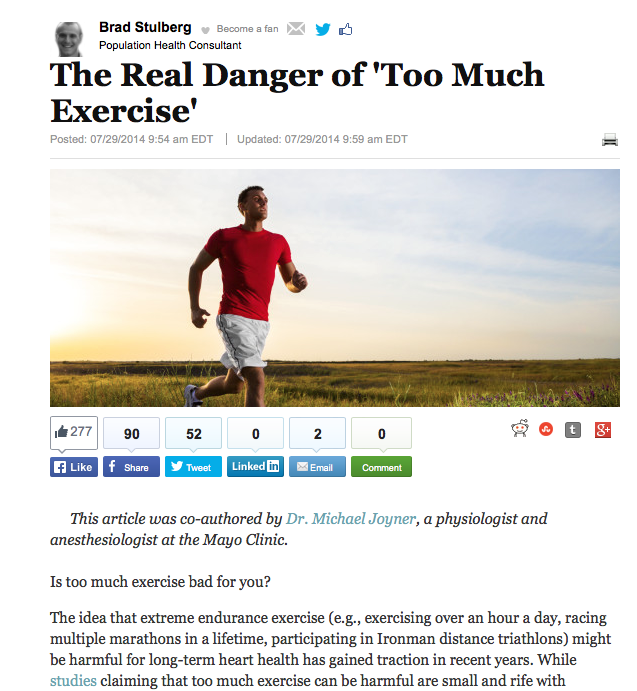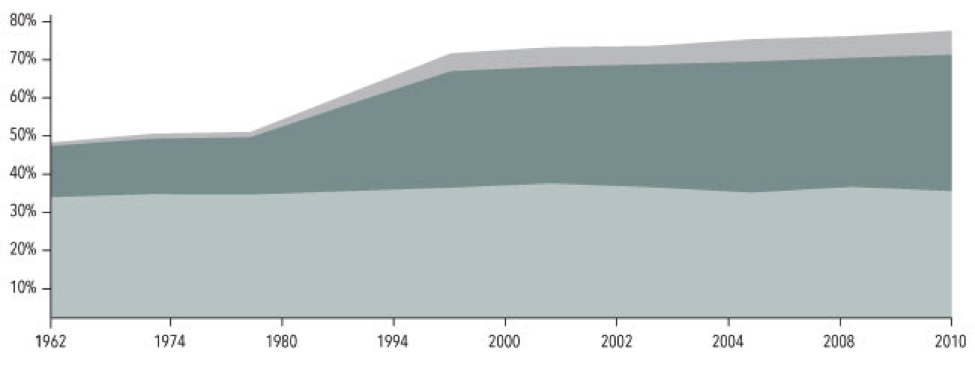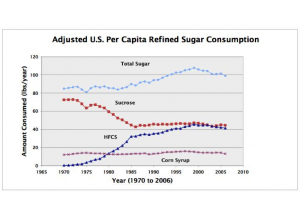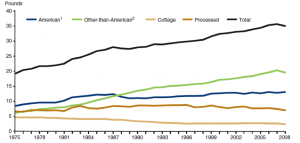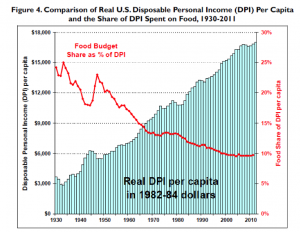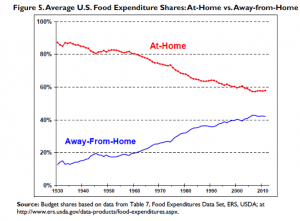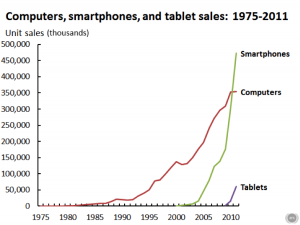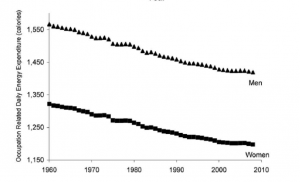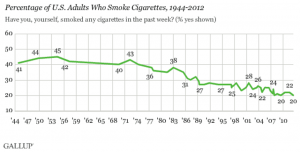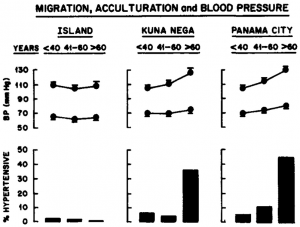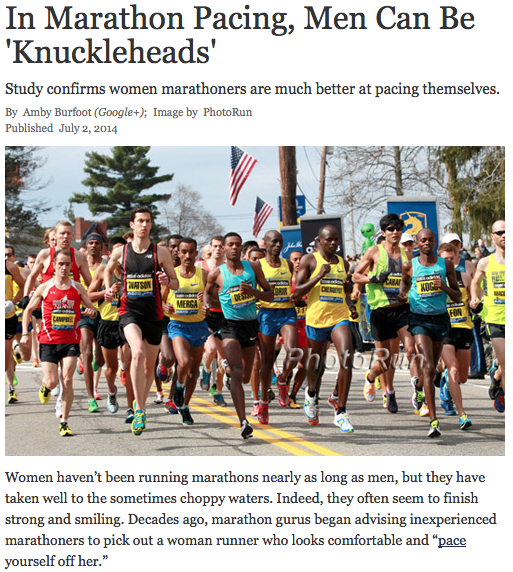Archive for July, 2014
Dick Fosbury & Who Innovated What?
At the 1968 Olympics in Mexico City, Dick Fosbury went over the high jump bar backwards and won the gold medal clearing a height of 7-4 1/4 (2.24m). Over the next 15 years or so, his Fosbury Flop technique became absolutely dominant. More recently as the world has become more and more obsessed with innovation, Fosbury has started to pop up in advertising campaigns for products that hope to be seen as innovative, and the B-school innovation award circuit can’t get enough of him. What he did is also a cautionary tale about the potentially stifling effects of guidelines, check-lists and metrics on things like the quality improvement and standardization efforts directed at things like medical care.
What Fosbury did and how it happened also offers fuel for both sides of the debate about the role of the solitary genius and inventor in change vs. the role of what might be called the ecosystem the innovator finds themselves in. As a 16 year old high school student in 1963, Fosbury struggled with the standard jumping techniques of the time known as the Western Roll and the Straddle which emerged after World War II. However, as he messed around with an older technique known as the “Scissors” he started to twist and turn a bit and the Flop emerged. The fact he was experimenting practice is not that surprising. Track practices and even competitions are frequently not as rigid and scripted as other forms of sports and many coaches tolerate levels of fooling around that might not be permitted in other places. As Fosbury noted:
“The interesting thing was that the technique developed in competition and was a reaction to my trying to get over the bar. I never thought about how to change it, and I’m sure my coach was going crazy because it kept evolving. I believe that the flop was a NATURAL style and I was just the first to find it. I can say that because the Canadian jumper, Debbie Brill was a few years younger than I was and also developed the same technique, only a few years after me (and without ever having seen me).”
The second thing to note about the track and field ecosystem of early 60s is that there was some institutional memory of the Scissors and there were coaches around who had seen it and done it. So maybe the flop did not seem as weird at the time as we might imagine now, and there are urban legends about people trying what might be called proto-flop modifications of the Scissors in the 1930s.
A third thing to consider is that landing pits improved dramatically after World War II as foam rubber replaced sawdust and sand. Among other things this led to a rule change that no longer required high jumpers to land on their feet. Improved pit technology was also driven by the development of fiberglass poles that led to rapid increases in the heights and records achieved by pole vaulters. It is one thing to fall 6 or even 7 feet into sawdust and another thing to fall 16 plus feet into sawdust. At some level you can argue that the better landing pits led the way to new high jumping techniques
The fourth thing to realize is that Fosbury was not alone. As he pointed out in the quote above, a year or two after he started innovating in Oregon, a 12 or 13 year old girl in Canada named Debbie Brill figured it out on her own. There is in fact a few seconds of video showing her using the “Brill Bend” at age 13 in 1966. If you talk to track and field people from Canada who are much older than 50 they can be quick to remind you that what you are watching when you watch the high jump is really the Brill Bend. Here’s the clip:
Finally, Fosbury gets the credit because of his great achievement in Mexico City at the 68 Olympics, however what if Brill had gotten wide exposure on TV for going over the bar backwards first? At least a few male high jumpers like Fosbury, Dwight Stones, and Valeriy Brumel, have achieved enough fame that might ring a bell with casual fans. Can anyone other than serious track nuts name a female high jumper? Would the almost exclusively male coaches of the late 60s have encouraged the guys to try a new technique developed by a teenage girl who could barely clear 6 ft? Would going over backwards have languished in the pre-title 9 purgatory that serious female competitors and achievers were frequently consigned to in the 1960s and 70s?
Dick Fosbury is clearly an innovator. However, even a brief look at the backstory of what he did tells us more about how innovation happens and diffuses than the conventional aha moment narrative does. The ecosystem matters and so do things like permissive coaches. I wonder if all of the leaders out there who are yapping about innovation are as flexible and open to new ideas as Dick Fosbury’s coaches were.
What is the Purpose of This Workout?
Last weekend I was in Eugene, Oregon participating in a symposium on human performance. A real highlight was listening to 81 year old Dr. Jack Daniels discuss his vast experience training and testing elite runners. This included his reflections and ideas on altitude training and what he learned helping prepare U.S. distance runners for the Mexico City Olympics in 1968. Throughout the talk as he gave examples of what elite runners do, Dr. Daniels kept asking and emphasizing:
“What is the purpose of the workout?”
He commented that if you can’t answer that question then maybe you should rethink what you are doing. As I reflected on this perspective, a number of related questions occurred to me. Here are three to think about:
- What is the purpose of this meeting?
- What is the purpose of this rule, guideline, or metric?
- What is the purpose of this argument?
With my three modifications of the “Daniels’ Question” as a background, I would urge everyone to reflect on their own circumstances and see what modifications you can come up with that might help you navigate your life a little better and more efficiently.
How the USA Got So Fat
You hear a lot of yapping about how the USA got so fat as a nation. All sorts of people want some simple reason for rise in obesity. That having been said, in the next eight charts I want to tell you a little bit about “what we know for sure” and see if I can paint a more complete picture of how this happened.
1. Obesity takes off in the late 70s.
The light grey bottom band on this chart from the NIH shows that the fraction of overweight American adults has been pretty constant at about 35% for years. The darker middle band shows that starting in the late 1970s the number of people who are obese has gone from about 10% to about 30%. The top band is the number of people with extreme obesity and it has gone from about 1% to about 6%!
2. Sugar consumption takes off in the early 1980s.
Chart 2 shows that sugar consumption per person has increased from just over 80 pounds per year in 1980 to about 100 pounds per year or more over the last 20 years. Where we get this sugar from has changed too. Sucrose (table sugar) consumption has gone down and High Fructose Corn Sweetener (HFCS) has gone from essentially zero in 1970 to more than 40 pounds per year. This has led some people to label HFCS as the bogyman responsible for “all of this obesity”. A far bigger problem is probably just total sugar consumption.
3. Cheese consumption has also skyrocketed.
Total cheese consumption as shown in chart 3 has also gone way up over the last 40 years. I am not sure what this means but just like sugar it is possible to construct a scenario where cheese is the culprit and “cause” of the obesity epidemic. A more plausible explanation is that the sugar and cheese consumption trends show what happens when agriculture policy is designed to generate a lot of tasty high calorie commodities that can then be turned into highly processed and convenient and low cost things to eat.
4. Cheap Food?
Chart 4 shows that the average person only spends about 10% of their disposable income on food. That is way down since 1930. The world does not get fat overnight or in just a year or two and the fact that spending on food went down so much in the 1950s and 60s might have set us up for the explosion of obesity that started in the late 70s. As I pointed out in the explanation of chart 3, this is another example of agriculture and food policy contributing to the problem.
5. Eating Out?
Perhaps another result of “cheap food” ag policy and other changes in society like more mom’s working, people staying single longer, smaller families, and relentless marketing is that we eat far fewer meals at home than we used to as shown in chart 5. The people who sell us this food know how to pack the calories in and pack them in a way that keeps us coming back for more. The average person also typically underestimates the calorie content of the fast food they eat which amplifies the cheap food problem.
6. Screen time.
Chart 6 speaks for itself and is emblematic of the massive increase in screen time that we have all experienced since about 1980. Sitting in front of a screen can’t be good for your waistline.
7. Occupational physical activity is way down.
Many people used to work at jobs that required either some or a lot of manual labor. Almost no one doses now, even the mailmen drive. Chart 7 shows that occupational physical activity is down by more than 100 calories per day for both men and women. This coupled with the fact that a lot of people get minimal or no recreational physical activity or exercise is another major problem. Some people have argued that the decline in occupational physical activity might explain most or the entire obesity epidemic.
8. Smoking is down.
Smoking has also declined over the last 40 years and smokers tend to weigh less than non-smokers. So, one unintended consequence of the welcome reduction in smoking rates might be more obesity. This is a trade that most public health experts would gladly make except perhaps from people with extreme obesity. Just like sugar and/or cheese consumption, occupational physical activity, and screen time you can argue that less smoking “is responsible” for the obesity epidemic. But as I have tried to emphasize throughout this post, the cause is likely a combination of what we eat and less physical activity and not any “one thing”.
Closing Thoughts
The eight charts above are a sample of the many things that have likely contributed to the obesity epidemic. Thus, it is unlely there is any one explanation for the obesity epidemic and be suspicious of anyone who says there is. The charts also show that a multipronged approach will be required to turn the problem around. Changing food and agriculture policy and what we put in our collective mouths will be one part of any solution. Figuring out ways to get more of the population to build more physcial activity into their day will be the second part.
The “Genetics” of Politics
Earlier this week a piece in the New York Times reviewed some ideas about how “genes” might influence political thinking and explain why people vote the way they do. Like many studies the observations underpinning the assertions about genes and politics rely on comparisons of traits between identical and fraternal twins or perhaps other closely related family members. Since identical twins are genetically identical, the fact that their political attitudes are more similar than fraternal twins is use as evidence that at least some elements of political belief systems are hard wired by genes.
There a number of obvious holes in this argument that parallel those raised in a previous post about genetics of talent. The two most obvious are the shifty definitions of what is a gene and also the inability of people to find discrete snippets of DNA that account for most human characteristics. A great recent example of this problem is from a paper looking at the ability of a large number (more than 60) snippets of DNA to help accurately predict the risk of diabetes. This study found that it is hard to find specific DNA signatures that tell you much about who gets diabetes. We know diabetes is highly heritable, and it is pretty easy to diagnose who is or is not diabetic based on simple clinical tests. However knowledge about DNA does not help much if at all. If we can’t use DNA to predict who is at risk of diabetes, how can we expect to find DNA based explanations for things as complicated as who is at risk for being conservative or liberal?
The Environment Matters
Like diabetes a lot of people will tell you that high blood pressure is heritable. However, take a look at the graph below from a study of the Kuna people from Panama. This study shows that depending on where the Kuna live, there are vast differences in the rates of high blood pressure as people age. So, a genetically homogeneous group of people who live in traditional ways on an Island have essentially no high blood pressure, those who live in a tight community (Kuna Nega) in Panama City have a rate of ~30% in those over 60, and the Kuna living all over Panama City have a rate of 40% in those over 60. In the groups living in Panama City there are also more young people with high blood pressure. If you plugged the blood pressure values from people like the Kuna into data analysis programs that estimate heritability and thus the “genetic risk” of various things, you will get wildly different answers depending on the sub population you study.
Whenever Anyone Says “It’s Genetic”…..
The take home message in all of this is that whenever you hear that some complex human trait “is genetic”, remember a few things:
1) The definition of a gene has shifted and many of the ideas about heritability date from the pre DNA definition of what exactly a gene is.
2) For things that are pretty easy to measure like height, weight, blood pressure and diabetes it has been hard to get clear cut DNA signatures that explain much.
3) The environment, behavior and culture matter. A whole lot of thinking about how much of what is heritable depends on the environment and not differences in DNA.
So take assertions about what is genetic with a grain of salt.
Is Overparenting Soccer’s Grass Ceiling?
The loss by the US to Belgium in the World Cup round of 16 will lead to all sorts of endless speculation about what this means for soccer in the US. As an extremely casual fan who can barely understand why there is not a fixed off-sides line like in ice-hockey, gridiron football, and basketball I think US soccer is a testament to the limits of overparenting. What do I mean?
First, I have been to Brazil and traveled around extensively. In essentially every vacant lot in every neighborhood I saw kids playing pick-up soccer. This was also true in rural areas. Contrast this to the acres of well-manicured fields in suburban America, hyper-organized youth programs, teams named Suburban-United, and minivans galore. The only pick-up games you see are when the immigrant adults show up on Sunday mornings and it is Bosnia vs. Somalia for an hour or two.
Second, drive around “nice” neighborhoods in the US and you see basketball hoops in the drive ways. Have you ever seen a soccer goal? While the NBA is populated by mostly African Americans, it turns out many are not as ghetto as we think. The relentless backyard games played by the Miller family (Reggie and Cheryl) are keys to what made them great players.
Third, all over the country in cities and towns large and small there is “a court” someplace where endless games of pick-up 3 on 3 take place. Everyone interested in becoming a good player knows where this court is and at the better ones you will find a collection of players ranging from solid high-schoolers to people headed to the NBA. Frequently these games have rules like “makers takers”, meaning if you score your team keeps the ball and if your team wins you keep the court. There are no parents, no officials, no fancy uniforms, and no Gatorade on the sidelines. There is also a phenomenon known as “noon-ball” at many YMCAs where in the summer middle aged men give the young guys lessons about holding, hacking, and the finer points of getting an edge. In the parent run world of suburban soccer would this be tolerated? What would happen to Jr’s self-esteem?
Finally, as I watched the US struggle against Belgium to mount attacks I kept asking myself where is the electrifying player who can make it happen? There was no Magic Johnson or Brett Favre to pull it out against long odds the way Lionel Messi did in Argentina’s win over Switzerland in the final minutes. I am also sure that while Magic Johnson and Brett Favre perfected their skills via formal practice, the roots of those skills were developed on playgrounds with no parents around. My bet is that no one drove Magic to the park in a minivan and taught him the no look pass. The paradox of US soccer is maybe that it has to get less organized to get better. Minivans can only go so fast and take you so far.
You are currently browsing the Human Limits blog archives for July, 2014.

